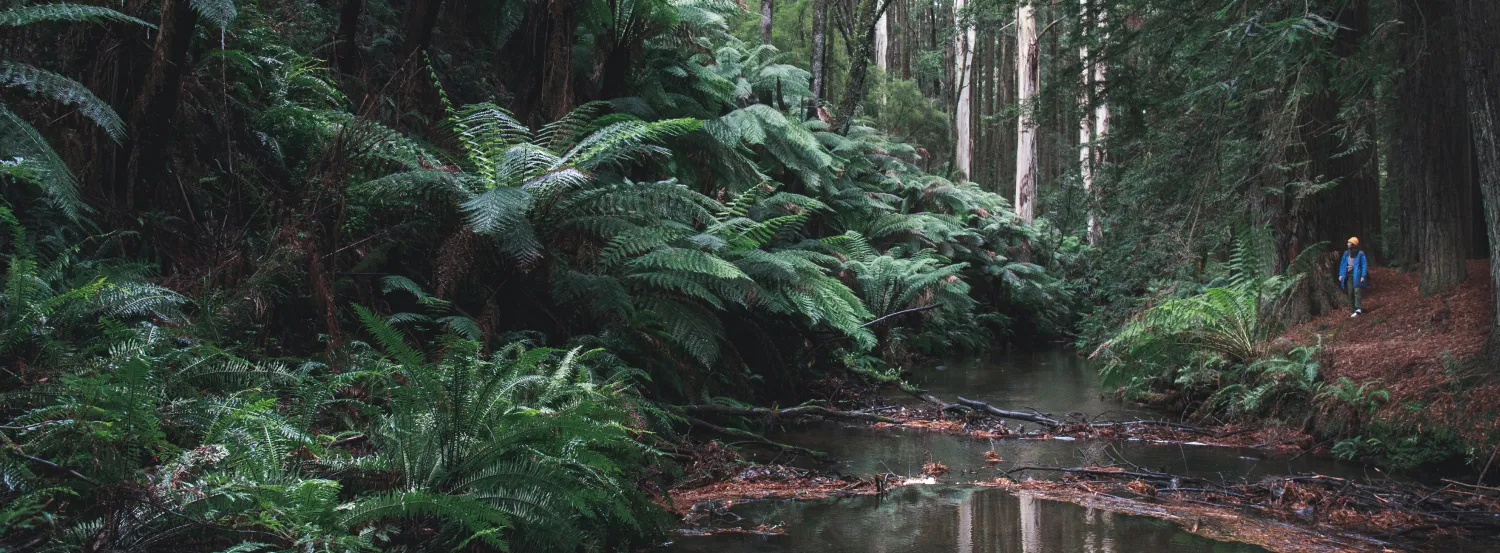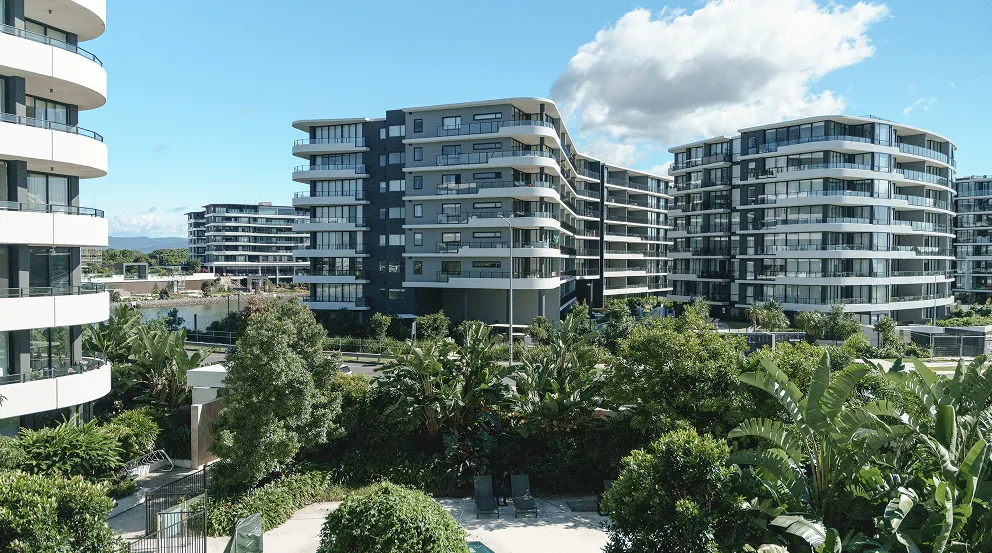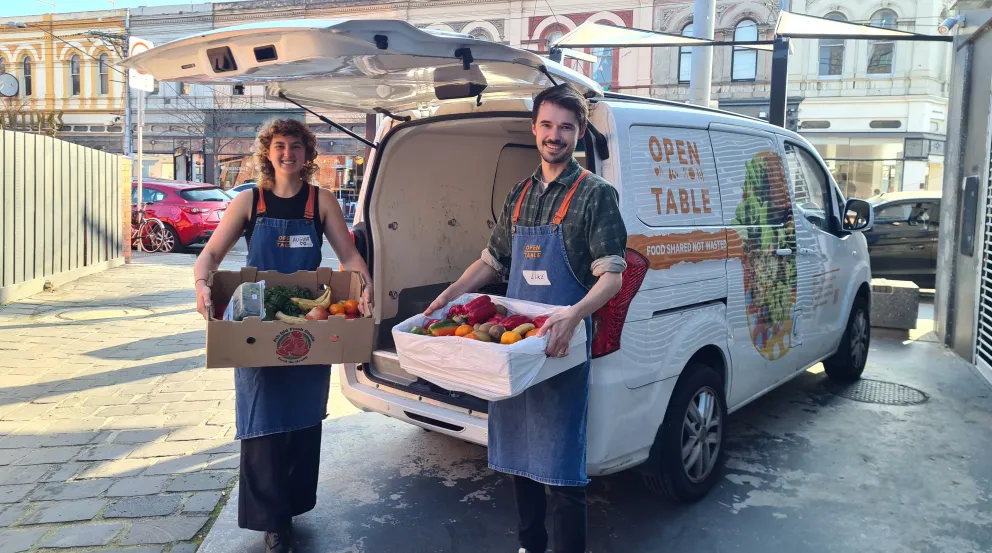You may have heard of a ‘circular economy’, which aims to re-use and regenerate as many products and materials as possible. But what about a ‘nature positive’ economy – what does that look like? It’s something we talk a bit about at Bank Australia, so to honour Earth Day 2025, we sat down with our Nature and Biodiversity Manager, Dr. Bram Mason, to learn more.
As a customer-owned bank, we take action on issues our customers care about. Climate action and protecting nature and biodiversity are at the top of that list. That’s why we’ve set our ambitious net zero by 2035 target–across not just our operations but also our lending portfolio.
In 2021, G7 leaders challenged the world to become not only net zero, but also ‘nature positive’. As the World Economic Forum noted, this represents a potential paradigm shift in how nations, businesses, investors and consumers actually view nature.

Beyond harm minimisation, towards enrichment
“In the past,” WEF said, “the mantra among a growing number of inspired leaders has been to do less harm, to reduce impact and to tread lightly. But what if we go beyond damage limitation? What if our economic activities not only minimise impact, but also enhance ecosystems?”
This is the essence of a ‘nature positive’ economic model. It’s a system that specifically enriches biodiversity, stores more carbon, and sees nature not just as a precious resource, but an economic end in and of itself. In other words, replace ‘tread lightly’ with ‘build a better, fairer and more resilient world’.
There are solid numbers to back this theory up. Living in a highly industrialised, tech-reliant world, it’s easy to forget that half of the planet’s GDP depends on nature. About $44 trillion dollars’ worth! Construction, agriculture, food – fundamental everyday goods and services that keep the world ticking and us alive – are all heavily dependent on things like soil, pollinators, ecosystems and water quality. And it’s not just their Gross Value Added (GVA) that’s vulnerable; it’s supply chains, too.
“A nature positive economy, to me, is one that has a really good understanding of the value chain,” says Bram Mason, Bank Australia’s Nature and Biodiversity Manager. “For a retail bank, like us, that generally means bricks and mortar. So where does the clay come from for that brick? Where does the timber come from? How and where specifically do our businesses interact with nature? And is there a way we can actually enhance nature as part of that value chain?”

Why ‘nature positive’ is important
As a customer-owned, values-led bank, we’ve known for a while that protecting nature and biodiversity are important issues for our customers. In 2023, 87% of Bank Australia customers told us they wanted to see more action on biodiversity loss (which has been accelerating in recent years). It’s why we’ve committed to restoring nature to pre-2020 levels by 2030, with the larger goal of full and ongoing ecosystem recovery by 2050. Ambitious? Perhaps. Necessary? Absolutely.
Studies have shown that a healthy ecosystem is one of our best defences against climate change. It’s simple maths: if we want to protect the economy, we first need to protect the environment, and we can’t protect the environment if we keep treating nature as just a resource for making things. “The real issue is that we’ve really become an extractive economy,” Bram says. “We’re taking everything we can from the natural world, but we’re not really giving back or protecting it, and we’re not using those resources wisely.”

Around the world: ‘Nature positive’ in practice
So what does a ‘nature positive’ economic model look like in the real world?
It could be a government scheme, like Costa Rica’s Payments for Ecosystem Services (PES), which rewards landowners for conserving forests and biodiversity. Incentive programs like this have helped Costa Rica double its forest cover since the 1980s, while supporting local economies through eco-tourism and sustainable agriculture. The PES is funded through a sales tax on fossil fuels, which encourages further divestment, supercharging the cycle.
It could be private businesses like Patagonia or Unilever investing in regenerative agriculture, or supporting land conservation projects. Or ex-oil-firm-turned-Danish-renewables-company, Ørsted, 3D printing artificial reefs to boost marine habitat on the Kattegat seabed.

How Bank Australia is supporting nature
For Bank Australia, the most tangible example of ‘nature positive’ economics in action is our 2,117-hectare conservation reserve in Western Victoria, on the Country of the Wotjobaluk, Jaadwa, Jadawadjali, Wergaia and Jupagulk Peoples. Established in 2008, it’s the first reserve of its kind in Australia: an area of land dedicated entirely to native reforestation and biodiversity conservation, and currently home to 251 native plant and 283 native animal species.
“That’s like our little investment in nature,” Bram says. “It’s also our sandpit, where we learn things, test things. How much does it cost to manage a reserve, really? How long does it take for a tree to grow and provide habitat for a threatened species?
“Working with local First Nations people [through the Barengi Gadjin Land Council], we’re able to get answers to those questions, and we can use that learning to share the story and help our clients do similar things. If a business comes to us and wants to preserve nature, we can tell them – first hand – how long it’s going to take, where the best sources of income are, and how to work closely with Indigenous custodians.”
Bram says this is one of the key drivers of Bank Australia’s nature and biodiversity strategy: to provide a template for other businesses, and help the ‘nature positive’ movement spread. “Part of the theory of change is to be that proof in the pudding,” Bram says. “To show other banks and businesses that they can go out there and make this stuff happen.
“I’m definitely optimistic about the future. I guess I have to be. In my job, I see so many people that aren’t waiting for governments to fix this stuff; they’re just digging in and getting on with it. And that’s what our strategy is. We’re just going to get on and do this, because it’s the right thing to do.”
Learn more about our impact and how our customers are helping use money as a force for good.








